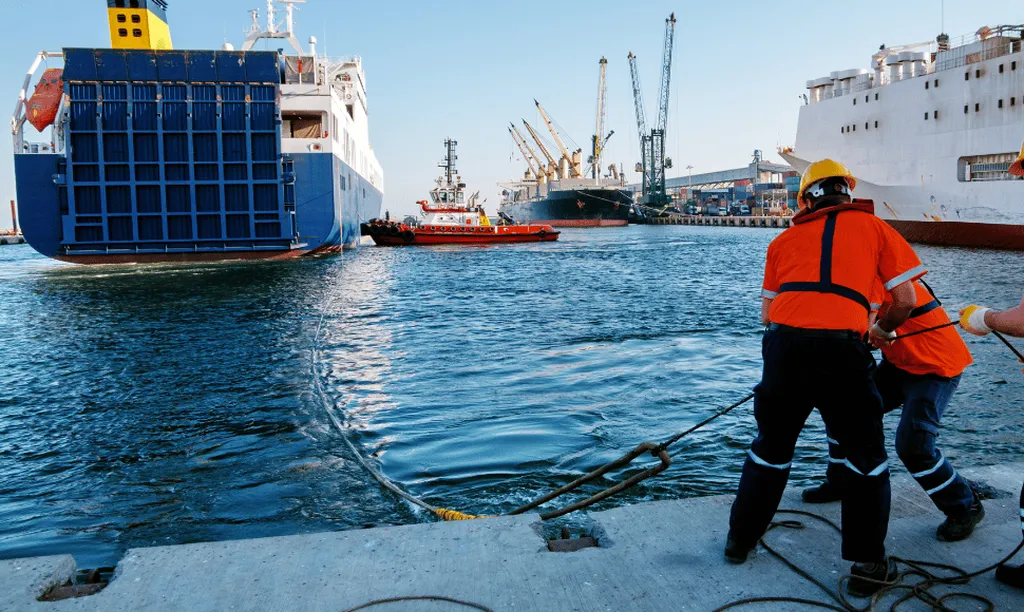Shipping’s digital transformation is no longer a futuristic concept—it’s here, and it’s reshaping the industry. AI-powered engines fine-tune routes, sensors predict maintenance failures, and dashboards flood bridges with real-time data. Yet, as Splash’s latest Seafarers magazine instalment reveals, a fundamental truth endures: a ship is only as smart as the people running it. The burning question is whether the industry’s rush to adopt smart technology is outpacing crews’ ability to understand and effectively use these tools.
When Splash asked industry leaders whether this rapid adoption risks being undermined by crews’ ability to grasp the technology, the consensus was clear: technology must empower, not overwhelm. But how to ensure that happens remains an open question.
Karin Orsel, CEO of MF Shipping Group, is among those who recognise the risk. “Technology is only as effective as the people who use it,” she says. “This is why we focus on user-friendly systems, ongoing training, and empowering our crew to interpret data accurately. Human understanding is critical to operational safety and efficiency.” This sentiment echoes across the sector. The excitement surrounding digital tools has sometimes overshadowed the reality that they are only as good as the interpretation behind them.
Cyril Ducau, CEO of Eastern Pacific Shipping, puts it bluntly: “Technology is only as strong as its user interface and training. We cannot expect crew to embrace new systems without proper training and user feedback.” At EPS, innovation is co-created with seafarers in mind. “We work closely with our technology partners to co-design and implement smart, practical, and intuitive solutions,” Ducau explains. “This approach ensures that innovation enhances and empowers our crew safely and effectively.”
Angad Banga, group COO at The Caravel Group, emphasises empowerment over automation. “When people are empowered, technology becomes a tool for excellence, not confusion,” he says. Fleet Management, Caravel’s ship management arm, blends digital learning and onboard systems to ensure smart tools lead to smarter outcomes.
For Allan Falkenberg, COO of HR marine at V.Group, the key lies in digital literacy. “Data and digital literacy are core foundational pillars to ensure better regulatory compliance, decision-making, and safety,” he explains. “Without the right training, smart technologies—from AI-driven systems to predictive maintenance—risk being underused or misapplied.” To close that gap, V.Group is betting on immersive learning. “From e-learning modules to gamification, steps are being taken to train crew to safely manage complex systems,” Falkenberg says.
However, not everyone sees the issue in the same light. Carl Martin Faannessen, CEO of Noatun Maritime, argues that the human-machine divide will increasingly be bridged by shoreside expertise. “We are less concerned with the crew understanding the information being generated, as this information will be increasingly processed ashore,” he says. For Faannessen, the future lies in collaboration rather than comprehension. “This opens the door to a revived partnership between ship and shore, where the data collected and the reality observed need to reach a handshake,” he says. “Where we are concerned is the ability to manage repairs on data-collection and analysis systems as they become increasingly critical to the safe running of the vessel.”
Vinay Gupta from Singapore-based Union Marine Management Services believes the new generation of seafarers is already tech-ready. “With more and more crew now coming from a generation raised within a technology-driven education and training framework, there is little doubt that today’s seafarers can understand and apply these tools effectively,” he says. “The key lies not in their ability to use technology, but in ensuring the systems remain intuitive, reliable, and supportive of good seamanship.”
Technology may help optimise, but judgment remains the final frontier. Ryan Kumar from Direst Search Global, a Singapore-based HR firm, sums it up, saying: “Smart ships mean nothing without smart interpretation.” “It’s not that seafarers can’t understand the data,” Kumar continues. “It’s that the industry hasn’t caught up in how it trains, trusts, and transitions its people to think digitally. We’ve built ships that can self-diagnose, optimise fuel, and predict maintenance. But we’re still training crews like it’s 1995.” Kumar argues for a new training philosophy. “Technology is only as good as the context behind it,” he says. “A dashboard can show you a fault, but it takes experience—and judgment—to decide what happens next. Training must shift from instructional to interpretive: less ‘press this button’ and more ‘understand why this matters.’ We don’t have a technology problem. We have a translation problem—turning raw data into real-world decisions.”
At Ardmore Shipping, Robert Gaina, senior vice president of

